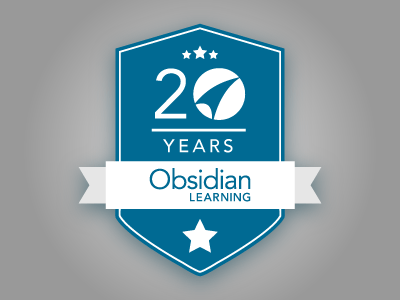
Mobile learning is high on the list of latest and greatest strategies that learning developers are including in their blended learning mix. The focus up to now has been on ease of access (everyone has a phone!), just in time learning (you can access your mobile device in the field!), and reinforcement of previous training (just hop on your phone to glance at reference material!). And as handy as all those functions sound, there are some challenges that L&D managers need to be aware of before investing time, energy, and resources toward an all-in mobile learning strategy.
One size doesn’t fit all.
Mobile learning can be a great tool, but it’s not adaptable for all forms of learning. Does anyone really think it’s a good idea to smoosh a five-day ILT into a series of independent microlearnings and call it a day? Some learning is just a better fit for a face-to-face setting. But are there elements of that five-day ILT that can be adapted for mobile learning? A checklist? A job aid? A two-minute safety video? Extracting the bits that don’t require a face-to-face setting helps crystallize the remaining content. Overall classroom time might be reduced, and the instructor can focus on the critical points that should occur in a classroom setting.
Get it done now! (Not.)
Everyone’s excited about the possibilities associated with mobile learning. The potential benefits are tantalizing, so it’s all systems go. Your manager is on board, you’ve got the budget, your vendor is ready to crank out all the mobile learning you want. But is that really the right strategy? If your company is new to mobile learning, you’ve got a few things to think about. First, employees might not be as receptive as you think. If they’ve always done learning in a traditional classroom setting, the shift can be jarring. Taking the time to prepare your employees for the changes to come will make a world of difference. Change management can be as simple as one question text surveys or scheduled reminders about the mobile strategy rollout. Second, faster doesn’t always mean better. Take the time to analyze how mobile learning can truly support your company’s overarching learning goals and carefully select the content that will really benefit from a mobile learning strategy. The last thing you want to do is blow your budget on mobile learning that ultimately serves no purpose, either because your employees aren’t interested or because the learning that’s been developed isn’t fit for purpose.
Does it work?
You’ve developed some nifty mobile learning. And now you’re getting some disturbing feedback from the field. Employees trying to access the content on their own devices are roadblocked by the company firewall. The learning seems to work fine with one browser, but won’t even launch with another. Hover functions that worked just fine on a computer don’t work at all on mobile devices. Oops.
Functionality is a front-end issue. As an L&D manager, you don’t want to be the person trying to explain to higher-ups why your expensive new learning initiative just doesn’t work. Do your research and make sure that your offering will be suitable from both a technical and functional standpoint. It should be compatible with your company’s cybersecurity standards, integrate with your LMS, function across all desired devices, and suitable to be accessed at the point of need (think environmental factors, sterilized environments, etc.). You don’t want to find out that your chemical plant safety app is useless because it hasn’t been designed to work on an intrinsically safe device.
Keeping it simple…shouldn’t be so hard.
You want to keep employees engaged, right? Let me tell you a little secret: “engagement” doesn’t mean whiz bang, flashy, multi-layered design elements. If employees truly are going to be using mobile devices in the field, they need streamlined, accessible designs that allow them to find what they need when they need it. Further, if employees are using their personal mobile devices as opposed to company-issued ones, keeping it simple is a smart precaution that will ensure that the learning is more likely to actually function as designed.
Mobile learning is a trend that has a lot going for it. Mobile devices are ubiquitous and becoming ever more so. Integrating this tool into a learning strategy only makes sense. But it needs to be done thoughtfully, as part of a learning mix, rather than as a singular goal. Take your time about implementing a mobile learning strategy to make sure you know how it best fits your organization’s learning needs, iron out technical and functional issues before you start developing your learning, and remember to keep it simple. Addressing these challenges early on will increase your chances for successful mobile learning outcomes.







